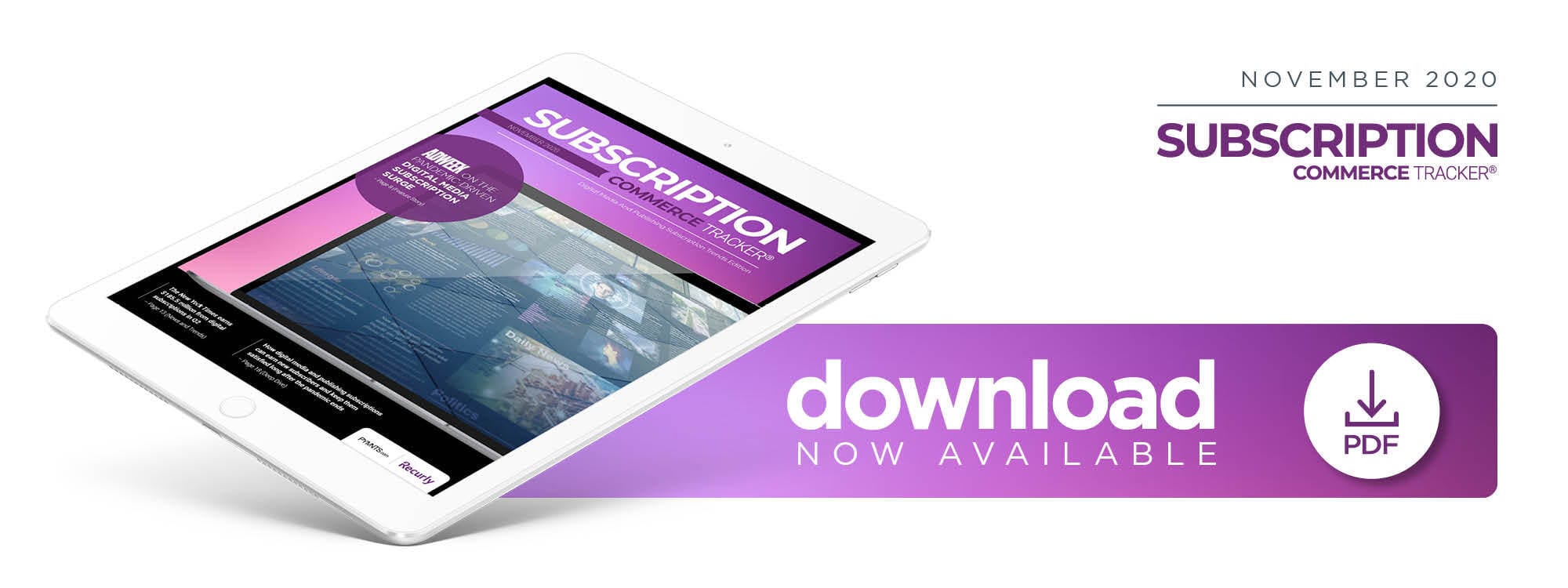Deep Dive: How Pause Features, Free Trials Can Help Digital Media Subscription Services Satisfy Users

Few businesses have flourished as the pandemic has crushed almost every sector of the nation’s economy.
The United States’ gross domestic product (GDP) has plummeted at an annualized rate of 32.9 percent since March, according to a World Economic Forum report, and this grim number rivals that of the Great Depression. The Department of Labor found that 23.2 million Americans received unemployment checks for the week ending Oct. 3, compared to just 1.4 million during the same week last year. These stark economic realities reveal why many U.S. consumers have far less money available for purchases, especially those deemed nonessential.
Many businesses that sell subscription-based products or services continue to operate in the black as Americans work from home, however. The space showed strong growth even before the pandemic, with one report revealing that subscription-based websites offering news, entertainment, food and healthcare had 776 million visitors and 5.7 million subscribers globally in 2018. What’s more, the sector was already expected to skyrocket at a compound annual growth rate (CAGR) of 68 percent for the next five years, climbing from $13.2 billion in 2018 to $478.2 billion in 2025.
This rising subscription commerce tide is lifting almost all facets of the industry — including services offering publishing and digital media subscriptions — as consumers worldwide confront the pandemic. PYMNTS’ recent Consumer Subscription Retail Services Report, done in collaboration with Recurly, found that digital media services added 10 million subscribers from February through July, allowing providers in this space to reach 25 million consumers total during that time frame.
Publishing and digital media services may be seeing robust growth during the health crisis, but they must still confront many of the issues that plagued them before its onset. This includes subscriber churn, which could see more consumers cancel their services once the crisis has passed. This month’s Deep Dive analyzes the trends boosting the publishing and digital media subscription sectors during the pandemic as well as how service providers can keep their subscribers engaged and prevent them from leaving their platforms after it ends.
A Swell In Demand
The pandemic is driving many consumers to seek subscriptions that can help them stay entertained and informed. A report noted that 18 percent of subscription companies witnessed accelerated growth between March and the end of May this year compared to the 12 months prior to the study, while 17 percent still saw growth but to a lesser degree. It also found that this trend extends to the digital news subscription market, which experienced a 110 percent boost from March through May.
A separate study examining digital media companies identified a similar trend, determining that subscriptions have become an important revenue source for many publishing businesses during the pandemic. The New York Times, for example, has reportedly witnessed quarterly growth of 14 percent during the crisis and now has 5.7 million digital subscribers. Dow Jones experienced a similar increase, with digital subscriptions accounting for 67 percent of its total subscription-based revenues.
The report noted that publishing companies’ subscription success is being driven by several key moves, especially pricing strategies. Some are turning to metering-based models rather than hard paywalls, which allow consumers to view a certain number of free articles before prompting them to sign up for premium content. Others are tweaking their marketing approaches and even incorporating advanced software that can bring customers personalized experiences to keep them coming back for more. This could be especially crucial as many in the publishing industry confront advertising revenue declines.
Feeling — And Fleeing — The Churn
The number of subscribers and time spent using subscription services have increased dramatically over the past six months. Total U.S. subscribers increased 9 percent from 167 million to 182 million from February to July, while total subscriptions rose 22 percent from 439 million to 535 million during the same period. The subscription market may currently be on the rise, but subscription services providers across the board are still bracing themselves for a fight against an age-old nemesis: churn.
PYMNTS’ and Recurly’s Consumer Subscription Retail Services Report found that many companies could see their subscriber ranks thin substantially once the pandemic ends, with 13.4 percent — roughly 24.4 million consumers — saying they are “somewhat” or “very likely” to cancel their services once the crisis abates. The risk of cancellation is an especially notable concern for digital media companies, with the report revealing that 17.5 percent of consumers subscribed to these services intend to ditch their subscriptions once the crisis ends — representing 4.3 million digital media subscribers.
There are a couple of ways that digital media and publishing subscription companies can keep subscribers from signing off for good once the health crisis ends, however. Digital media subscribers appear particularly fond of free trials, for example, which allow users to experience all the perks associated with a paid service free of charge for a select period of time. The goal of offering free trials is to convert subscribers into paying customers once their trial periods end.
The report found that 10.4 percent of digital media subscribers are using free trials — one of the highest shares of users for any given type of subscription service. Thirty-one percent of free trial users, on average, will “likely” or “certainly” keep their subscriptions at the end of their trial periods, but just 14 percent of digital media subscribers intended to keep their services after the pandemic — the lowest share of free trial users by service. Offering longer trial periods could help mitigate this trend, however, with 39.4 percent of these subscribers saying they would reconsider their cancellation plans if offered an additional free month of service. Consumers’ employment statuses can also play into how likely it is that they will keep their subscriptions.
Pause features present another possible solution to the churn problem. These options would allow subscribers to temporarily halt payments on their subscriptions, potentially keeping 44.4 percent of all subscribers from leaving their services for good. The share of digital media subscribers who are considering canceling their services but who would reconsider if given pause features is smaller, but still significant at 33.4 percent. This reveals that pause options could be powerful tools in subscription providers’ efforts to keep their subscribers in the long term.
The subscription services market is booming as more consumers stay home and sign up for services that can entertain and inform them. The industry stands to see continued growth, but subscription companies — especially those offering digital media and publishing services — must determine how best to provide value with new programming, for example, to satisfy and retain subscribers at risk of canceling once the pandemic has passed. Strategically leveraging features like longer free trials and pause options could be key to helping them do so.

